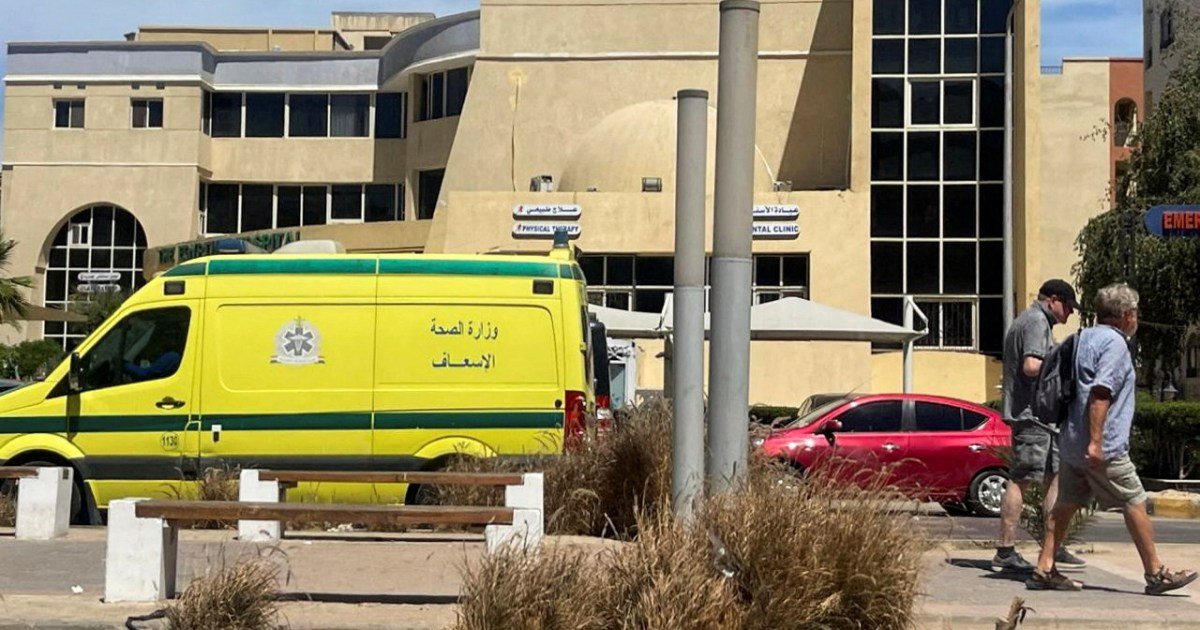Middle East
Six killed in Red Sea tourist submarine sinking off Egypt: What we know | Tourism News

A tourist submarine sank on Thursday during a routine underwater sightseeing tour off the coast of Hurghada, a popular Red Sea resort city in Egypt, killing at least six Russian nationals on board.
The vessel, which is owned by a private tourism company, Sindbad Submarines, was designed to take tourists underwater to view coral reefs and marine life – a major attraction in the area.
According to reports, the vessel sank approximately 1 kilometre (0.6 miles) offshore from Hurghada, Egypt.
Despite efforts by the crew to surface and evacuate passengers, the vessel quickly sank at about 10am local time (08:00 GMT).
Who was on board?
The submarine was carrying a total of 50 people – 45 tourists and 5 Egyptian crew members – at the time of the incident, Red Sea Governor Amr Hanafi said in a statement.
Russia’s consulate in Hurghada also confirmed the submarine was carrying 45 tourists.
Among the tourists were nationals from Russia, Norway, Sweden and India.
Who died in the incident and are people missing?
Six people died, including four adults and two children, all of whom were identified as Russian nationals by Hanafi.
Authorities have not released all of their names pending notification of relatives, but Russian media confirmed that the victims included members of the same family who had been holidaying in Egypt.
Egyptian officials suggested a married doctor couple were also among those who died.
All of the remaining 39 tourists and five crew members have been rescued – no one is missing.
But among them, 29 individuals sustained injuries. While most injuries were categorised as nonlife-threatening, such as bruises, cuts, and mild hypothermia, four individuals remain in critical condition and are in the intensive care unit, according to Hanafi.
Why did the submarine sink?
Neither Egyptian nor Russian officials have attributed any specific reason for the vessel’s sinking, and investigations are continuing.
But the Association of Tour Operators of Russia posted on Telegram that the submarine had struck a reef while about 20m (65 feet) below the surface of the sea and that it then began to lose pressure.
Water pushes from high pressure to low-pressure regions, so if the inside of the vessel lost pressure, the likelihood of the seawater flooding in would have risen.
What are survivors saying?
According to survivors, that’s exactly what happened. As water flooded the vessel, passengers scrambled to reach the surface.
Elena Boldareva said the submarine began to dive with hatches open, according to Britain’s Daily Mirror newspaper.
People saved themselves as best they could, Boldareva said, adding: “Some managed to swim out, some didn’t.”
Boldareva and her husband managed to swim out, but her daughter and mother were taken to the hospital in a serious condition.
They were among the dozens transferred to Hurghada General Hospital for treatment and further observation.
How have authorities responded?
Egyptian authorities responded quickly to the incident, launching an emergency search and rescue operation led by the Red Sea governorate and the Egyptian coastguard. Divers were dispatched to the site within the hour, and several boats assisted in bringing survivors to shore.
Hanafi said the submarine had all the required licences and had passed technical inspections, and that investigations with crew members were under way to determine the cause of the sinking.
Is underwater tourism rising?
Sindbad Submarines is part of a rapidly expanding underwater tourism industry across the world. The industry, which focuses on scuba diving and undersea reef exploration – including in submarines and submersibles – was estimated to be worth $36bn in 2017, and is believed to have only grown since then.
A series of companies today advertise underwater tours in submarines and submersibles – underwater vessels that need a larger platform to transport them.
But some experts have warned that regulations for the industry are struggling to keep up with its growth.
In June 2023, the Titan, a privately owned submersible went missing off the coast of Newfoundland, Canada, with five people on board. They included four tourists and the founder of OceanGate, the company that owned the vessel. Debris from the submersible was found four days later, and investigators concluded that the vessel had imploded, killing all five people.
What happens next?
The incident has sparked concerns about tourism safety standards in Egypt, especially for popular Red Sea excursions like diving, snorkelling and underwater tours.
Many tourist companies have either halted or limited travelling on the Red Sea due to the dangers from conflicts in the region.
Sindbad Submarines, which operates two tourist submarines out of Hurghada, has not yet made a statement on the incident. The website was temporarily down but appears to be up and running again.
According to the website, the submarines are engineered in Finland to sustain underwater pressure up to 75 metres (246 feet), “ensuring safety and reliability”.
“In an emergency, oxygen masks are located overhead and life vests under the seats,” the website reads.
